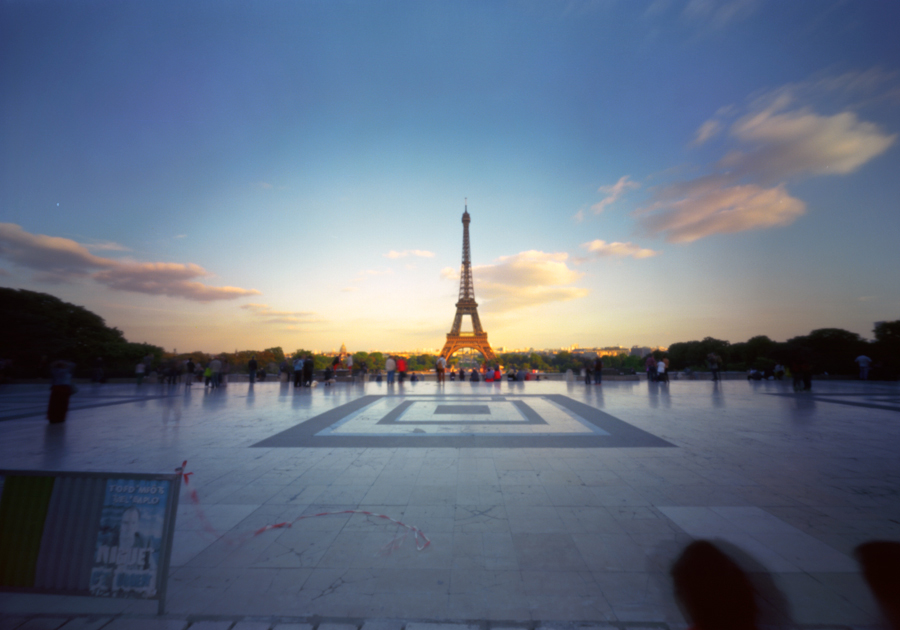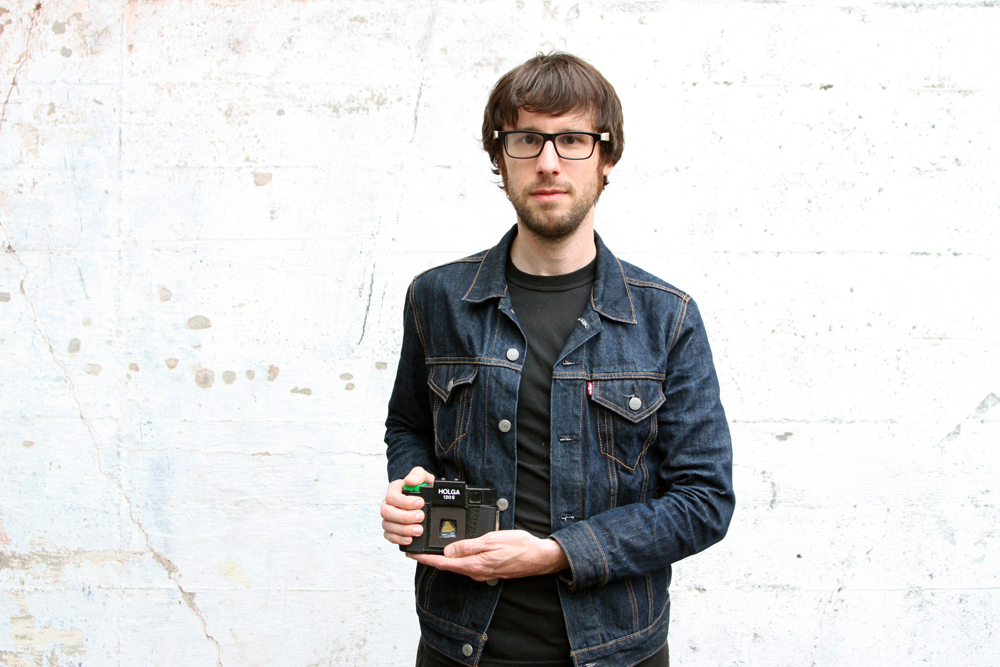The Pinhole Camera Makers and Users
Written by Katt Janson Merilo
In celebration of Worldwide Pinhole Photography Day, we’d like to celebrate all you passionate pinhole photographers and camera makers. We sat down (virtually) with several pinhole camera makers and takers recently to pick their photographic brains about what draws them to pinhole photography, and what kind of cameras they make and use.
Kurt Mottweiler
Pinhole Photography by Kurt Mottweiler
BMC: What is it about pinhole photography that draws you in?
KM: Pinhole photography is the closest thing to magic I get to practice in my daily routine. Combining magic with my love for historic camera design and the craft that goes with it is about as good as it gets.
BMC: What special modifications did you incorporate into your own pinhole camera?
KM: I like a camera that functions easily and inspires me as a beautiful object. Everything evolves from there.
BMC: Where has your pinhole camera been?
KM: The wonders of northern New Mexico (where I lived before Portland), the treasures of southern Utah (one of my favorites places), the top of the Tacoma Narrows bridge tower (one of the coolest places I’ve stood), the delights of Italy (what can you say . . . ), a lot of the rest of the U.S.A. and, of course, the best place on earth – Portland.
To learn more about Kurt’s cameras, or order one for yourself, visit his website.
Kurt’s curved plane pinhole camera
Kurt wielding his pinhole creation
James Guerin
Analog Phone Multi-cell by James Guerin
BMC: Why do you like using your pinhole?
JG: The simplicity of a light tight box, a tiny hole and a piece of light sensitive material. The constraints it imposes are severe, no viewfinder, no focusing, tiny aperture and long exposures. As Da Vinci put it – “Art lives from constraints and dies from freedom”. This certainly holds true, some of the most creative images I’ve ever seen have been created by a pinhole camera. Aside from that I love the experience – the capturing of pinhole images. The long exposures slow me down, allow me to see and appreciate my surroundings and in some way to feel connected. When I first started photographing the image or result was all important, shooting pinhole has taught me that the experience, is as important.
BMC: What special modifications did you incorporate into your own pinhole camera?
JG: The process of camera conception, building, shooting and developing film/paper is also a huge part of it for me. I’ve built curved film plane panoramic cameras, matchbox solargraph cameras, 6×6 and 6×9 wide angles, 4×5’s, an 8×10” ultra-wide, anamorphic, a 4×10” panoramic multi-shot, an 8×10” multi-cell camera and couple of zone plate cameras. Recent features I’ve incorporated are off centre pinholes to create scheimflug effects and multi-cell images – a bit like a collage of separate images to come together to make one image. I also sell pinhole cameras and have just added a new 4×5″ model made from oak and walnut, with a 38mm focal length and 3 independent pinholes that will enable shooting with the central, or a vertical or horizontal rise pinhole (30mm of rise).
BMC: Where has your pinhole camera been?
JG: I’ve shot pinhole here in mainly here in France and in Ireland. I’ve currently got a few solargraph cameras stuck to some street signs in Limerick (Ireland) quietly going about their business.
For more information about James’ pinhole cameras, and to get one for your own, visit his website.
Matchbox Solargraph by James Guerin
James Guerin and his pinhole creation
Darius Kuzmickas
Pinhole Photograph by Darius Kuzmickas
BMC: What is it about pinhole photography that draws you in?
DK: Pinhole photography is my comfort zone! I also call it “slow” photography, because of long (or very long) exposures. Pinhole photography (or the camera obscura) is a heavily intuitive process where I’m more concerned about creating a mood rather than delivering an image wrapped in the trappings of reality. The moment is not important. Simple in theory and process, it predates modern photography, and it can be quite tricky. What isn’t left to luck is owed to plenty of practice, precision and experimentation.
BMC: What special modifications did you incorporate into your own pinhole camera?
DK: The ability to shift the pinhole for perspective corrections, for use especially in photographing architecture. I wanted to have this feature for a long time. So last year I designed a large format shift camera and master camera maker Kurt Mottweiler built it… one for me and one for himself. It is my No 1 camera right now.
BMC: Where has your pinhole camera been?
DK: Everywhere where I’ve been.
For more information about Darius, his pinhole cameras, and his pinhole photography, visit his website.
Pinhole Photo by Darius Kuzmickas
Darius and his pinhole cameras
The Pinhole Photograph Makers
Zeb Andrews
Pinhole Photo by Zeb Andrews
BMC: Why do you like pinhole photography?
ZA: Two big reasons: they see the world in a way unlike any other camera I own, in a way I myself certainly cannot see it. They capture a span of time, they have limitless depth of field, they photograph with a certain serendipity. The other reason I like pinhole photography so much is that it slows me down, it encourages me to stop, step out from behind the camera, to look at the world and notice things while I am waiting on the five minute exposure to wind down.
BMC: What camera(s) do you use? Where have you taken them?
ZA: I have several, but my favorites are my Zero Image 2000, my Innova 6×9 and my Reality So Subtle 141 6×17.
Check out Zeb’s website portfolio for more images, lensless and otherwise.
Pinhole Photo by Zeb Andrews
Zeb and his Reality So Subtle 6x17 pinhole camera
Shane Goguen
Pinhole Photo by Shane Goguen
BMC: Why do you like using your pinhole?
SG: I use my pinhole camera because of the simple imagery it produces. The initial photograph that comes from a pinhole camera is usually what people spend hours on trying to create in post production work.
I also like that I can use 100 ISO film for almost all circumstances.
BMC: What special modifications did you incorporate into your own pinhole camera?
SG: I use a converted Holga. You can see unusual distortion in my photographs because I modified the pressure plate in the camera.
See more of Shane’s work on his Instagram feed.
Pinhole Photo by Shane Goguen
Shane Goguen and his modified Holga pinhole camera
David Paulin
Pinhole Photo by David Paulin
BMC: Why do you like pinhole photography?
DP: I enjoy the different perspectives you can get with pinhole. The process is entirely unique, as well, and the slower exposures always lend themselves to interesting effects. You never exactly know what you’re going to get, but that’s part of the fun.
BMC: What camera(s) do you use? Where have you taken them?
DP: I have a Zero Image 6×6 camera, which I’ve taken all around the Pacific Northwest.
Find David on Flickr of more of his photography, pinhole and otherwise.
Pinhole Photo by David Paulin
David and his Zero Image pinhole camera
Faulkner Short
Pinhole Photo by Faulkner Short
BMC: Why do you like pinhole photography?
FS: I like the mystery involved with pinhole photography; you never know what exactly you’re going to get until you see the results. I also like unique nature of the cameras and photographing process. You can set a camera down anywhere and most people who come across it don’t even know what it is. There’s something about the colors I get out of my pinhole camera. Maybe it’s the lack of a lens, but I always feel like the colors are more saturated and pop much more than from other cameras.
BMC: What camera(s) do you use? Where have you taken them?
FS: I have an older Zero Image 2000 6×6 pinhole camera, and it’s followed me across the US, Europe, and Argentina.
Find Faulkner on Flickr for more photography, pinhole and otherwise.
Pinhole Photo by Faulkner Short
Faulkner and his Zero Image pinhole camera
More Notable Pinhole Makers
Check out these photographers for even more pinhole inspiration.
Don Pyle – photographer and crafter of the Innova Pinhole camera
Danielle Nelson – pinhole photographer
Gretchen Hayhurst – pinhole photographer
Eddie Erdmann - pinhole photographer
Jana Uyeda – pinhole photographer
The Lensless Podcast - Near-weekly interviews with pinhole photographers





















